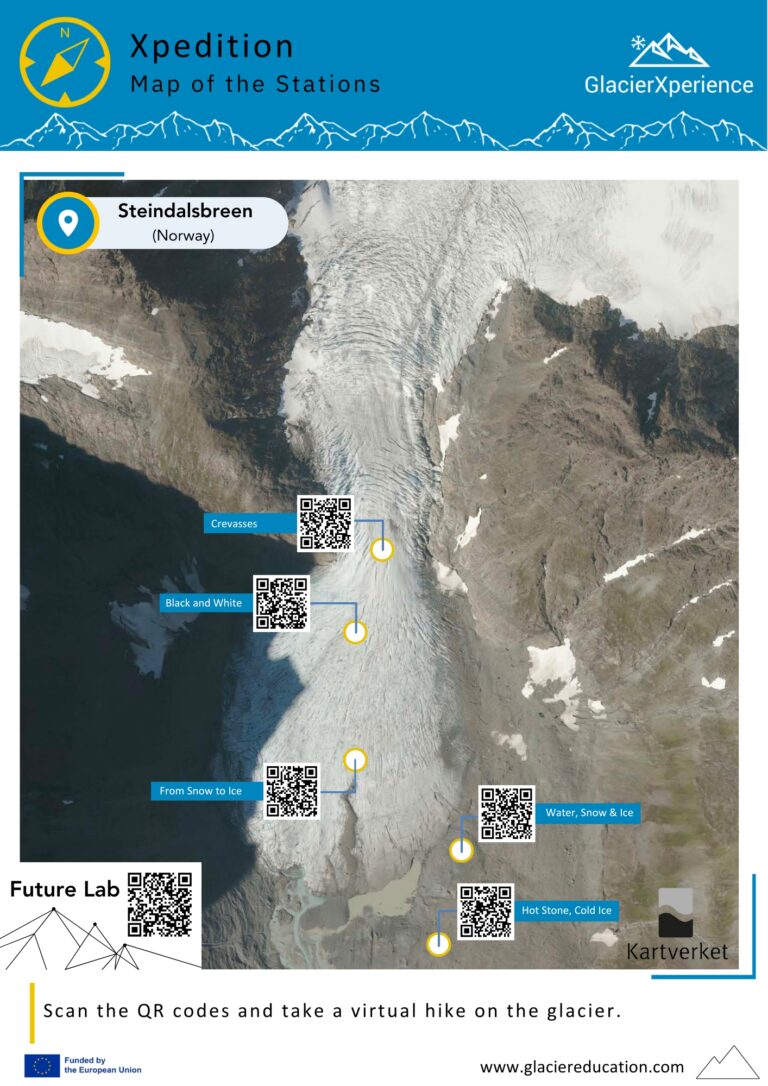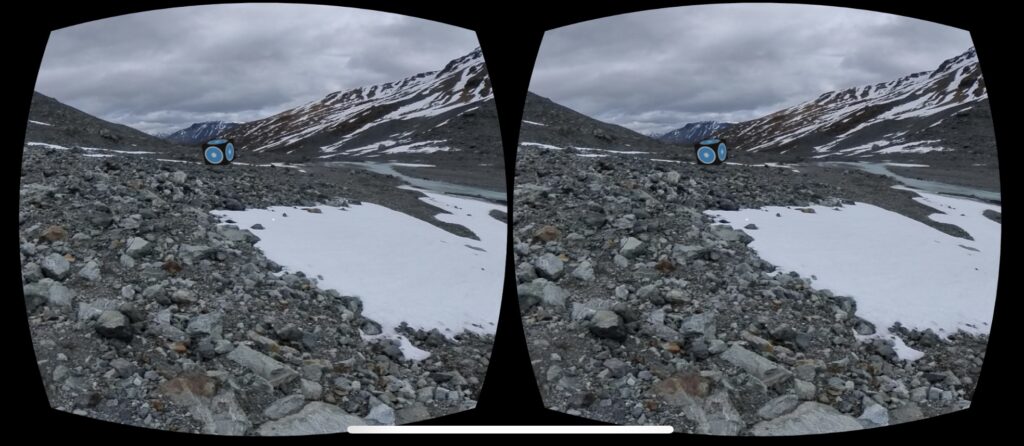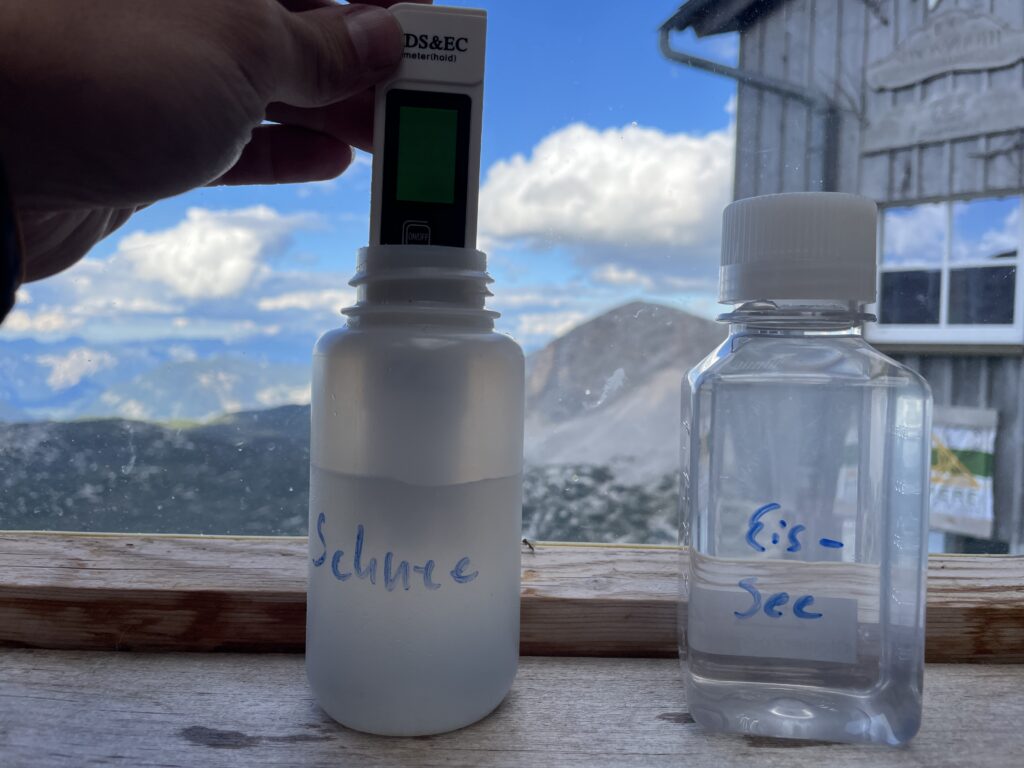This is how our digital learning environment works
We have developed two different glaciers, the Steindalsbreen (Tromsø, Norway) and the Hallstätter Glacier (Dachstein, Austria), as digital learning environments. To help you find each station more easily and know where you are on the glacier, we have created a map with all the stations marked. Using QR codes and a smartphone, you can access these stations. Behind each QR code is a 360° scene on the glacier. There are two ways to navigate on the glacier:
- When you are in a scene, you can move to the next scene or go back by clicking on the white icons with triangles. This allows you to navigate along our path on the glacier.
- Alternatively, you can explore the glacier using the map. Many scenes are designed around specific themes. Depending on your interests, you can directly access the scene with the desired topic by scanning the QR code with your smartphone.
The “Future Lab” section is designed to provide insights into current research and developments in climate protection. In this section, you will find experiments that demonstrate the new possibilities research offers in addressing climate change.

Our digital learning environment is also WebVR enabled. This allows you to explore the glacier virtually using a VR headset (e.g., Oculus) or a VR headset for your smartphone. In this mode, the glacier can be experienced as a true VR adventure. You can find instructions here.
Please note: In VR mode, there are no links to the experiment instructions.



